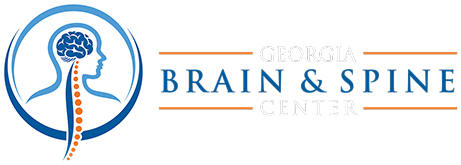One of the most common medical conditions people develop in their spine is something called degenerative disk disease (DDD). Affecting more than 3 million people per year in the United States alone, DDD can be an effect of habitual behavioral choices, working conditions, or simply aging. Over time, almost everyone’s spinal discs dry out and break down, but some people with degenerative disc disease experience pain and possible neurologic symptoms from this process.
 All of your spinal vertebrae are separated by discs that are mostly made of water and different types of collagen. Each disc consists of a soft inner core (nucleus pulposus) and a harder outer wall (annulus fibrosus). Spinal discs act as shock absorbers, both for individual vertebrae and your spine as a whole. Furthermore, they help cushion the vertebrae as the spine bends and twists, providing buffers between individual vertebrae. As they wear down or degenerate, both the shock absorption and cushioning functions become less effective, causing back pain and difficulty with movement. Furthermore, the added stress can cause the ligaments and facet joints in the spine to enlarge, >narrowing the spinal canal and compressing the nerve roots. As the vertebrae rub together, bone spurs can also form.
All of your spinal vertebrae are separated by discs that are mostly made of water and different types of collagen. Each disc consists of a soft inner core (nucleus pulposus) and a harder outer wall (annulus fibrosus). Spinal discs act as shock absorbers, both for individual vertebrae and your spine as a whole. Furthermore, they help cushion the vertebrae as the spine bends and twists, providing buffers between individual vertebrae. As they wear down or degenerate, both the shock absorption and cushioning functions become less effective, causing back pain and difficulty with movement. Furthermore, the added stress can cause the ligaments and facet joints in the spine to enlarge, >narrowing the spinal canal and compressing the nerve roots. As the vertebrae rub together, bone spurs can also form.
The outer wall of a spinal disc contains nerves, so damage to those outer walls can cause back pain. We become more susceptible to sustaining small tears and cracks in the outer walls of our spinal discs as we get older, both because of the gradual drying process and the cumulative stress of everyday movements and minor injuries. As cracks form in the discs’ outer walls, the softer core can begin to push through the cracks, potentially causing it to bulge or slip out of place. This is what happens when people develop a herniated or slipped disc.
Degenerative disc disease often causes a sharp or dull pain in the back or neck. However, depending on where the degenerated disc is located, what has caused it, and how it’s affecting the nerves around it, symptoms may manifest in a variety of ways. You may feel pain in your lower back, neck, thighs, buttock area, arms or legs. The pain may be exacerbated by twisting, bending over, lifting something, or simply changing position.
Many people with degenerative disc disease report that walking and/or lying down provides some relief from their back pain, and the pain can range from slightly annoying to severe and debilitating. It can also last for days or months at a time, then seemingly go away on its own—only to recur in the future. Furthermore, DDD can cause numbness and tingling in the sufferer’s arms and legs and/or cause the leg or arm muscles to weaken. This is because damaged disks can impact the nerves near the spine.
Unfortunately, degenerative disc disease cannot be reversed. While we can perform surgical spinal procedures to treat it, we usually reserve surgery as a last resort for severe cases that aren’t responding to nonsurgical treatment methods. Healthy habits such as practicing good posture, developing proper form when engaging in physical activity, and performing certain types of exercise can stave off DDD and lessen its effects. People with this condition can also benefit from targeted physical therapy, medication management, and cortisone injections.
If you’re experiencing any of these symptoms or think you may have any type of brain, spine, or neurological issue, come see the experts at Georgia Brain & Spine Center. If you’d like a second opinion on an initial diagnosis or have any questions we might be able to answer, please contact Georgia Brain & Spine at 1 (800) GO-SPINE to schedule a consultation today. Be sure to follow us on Facebook and Twitter for the latest updates, and come back to the website soon for a new blog.
